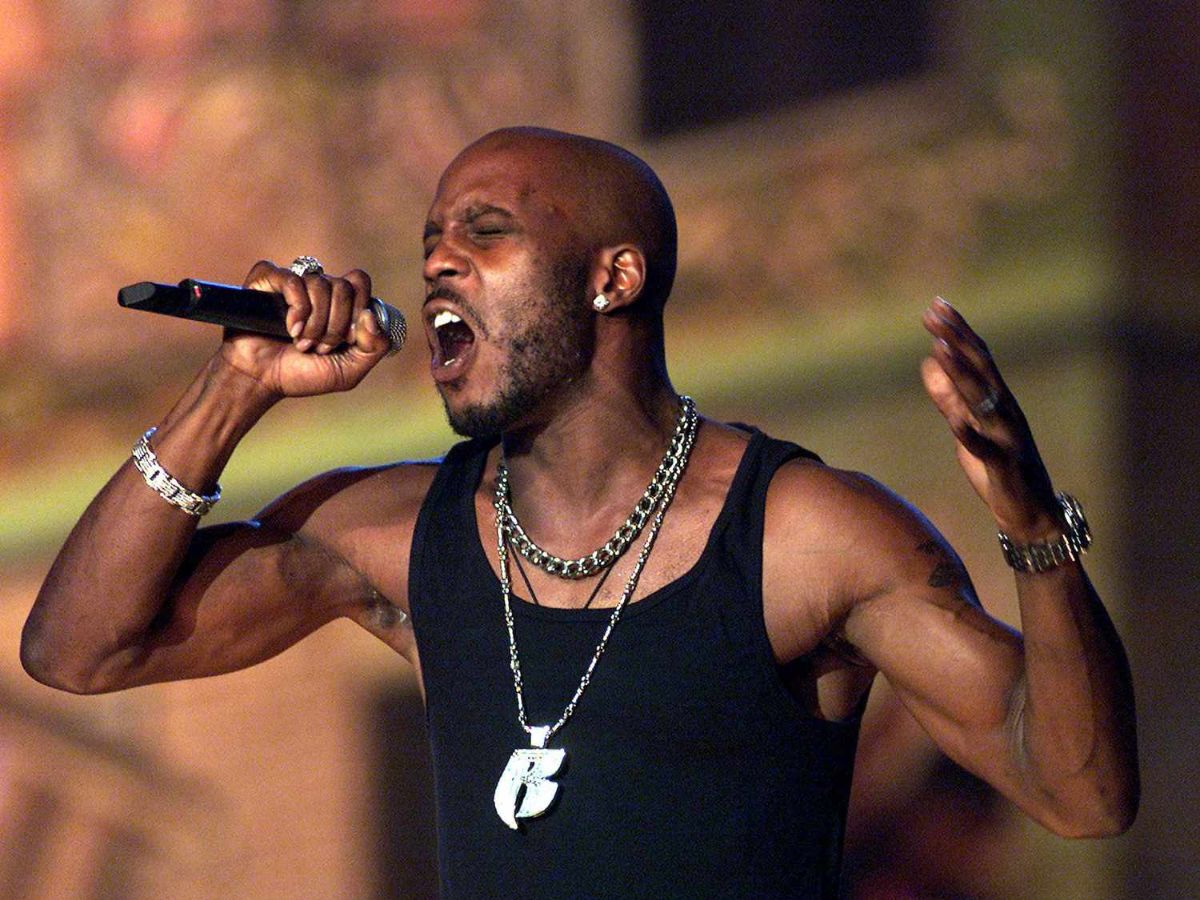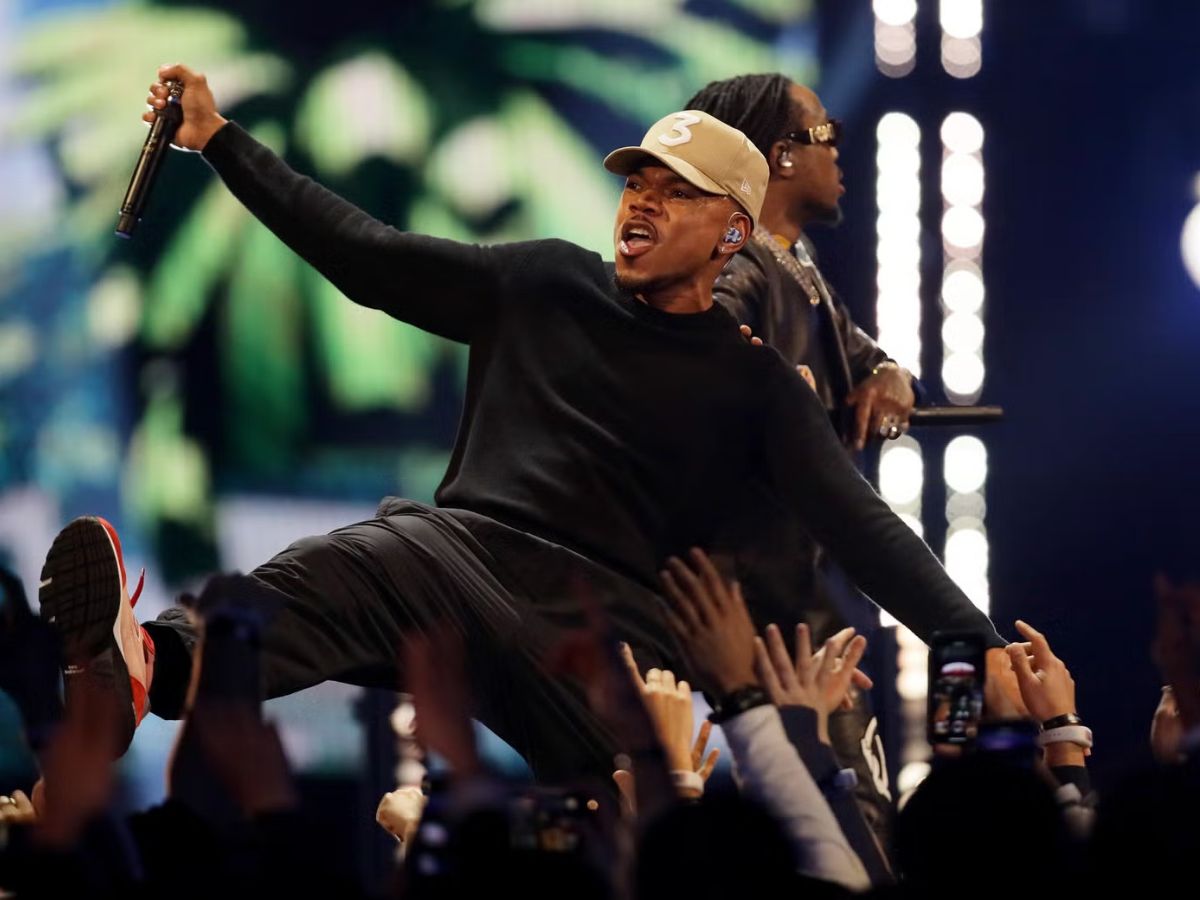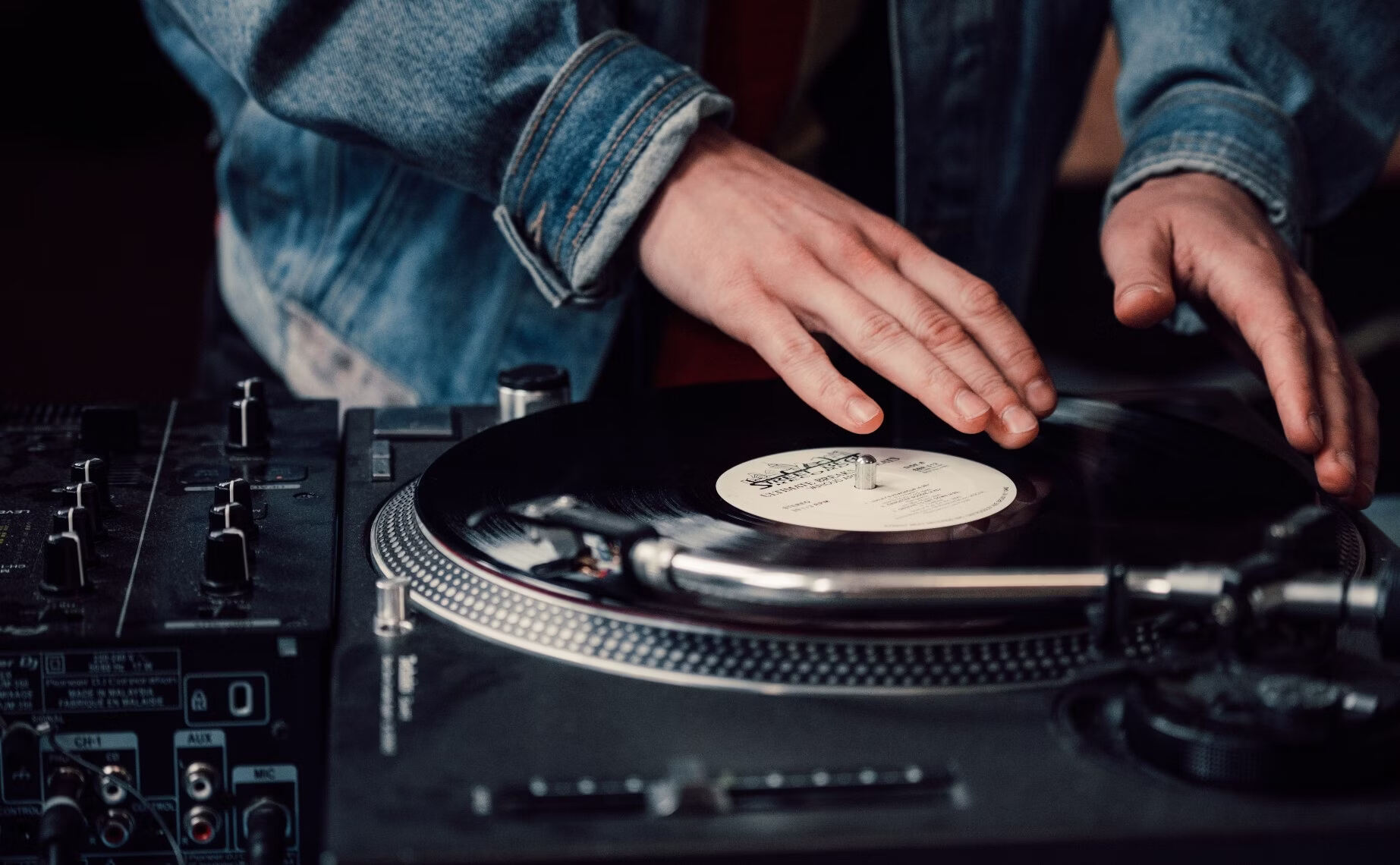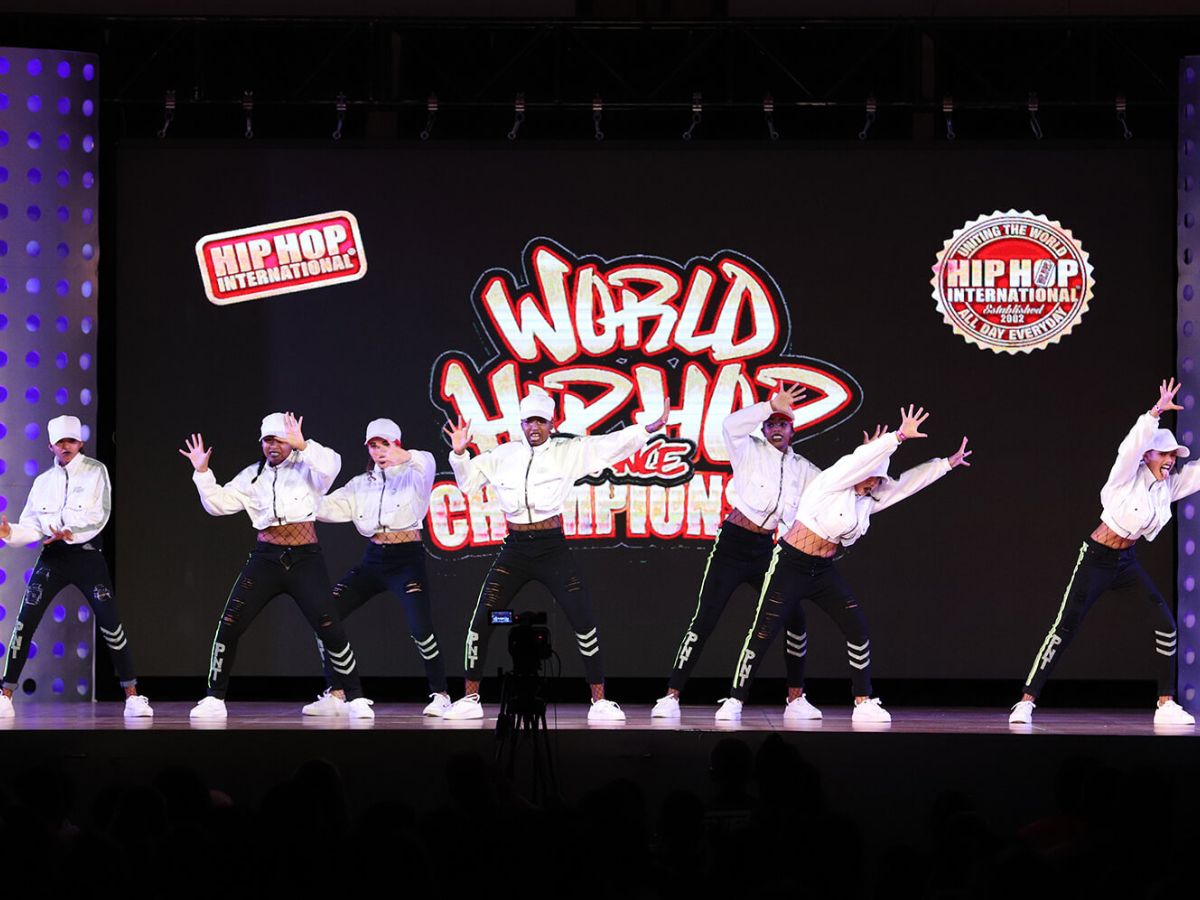Home>Genres>Hip Hop>What Is One Notable Fact About How Hip Hop Music Was Created?
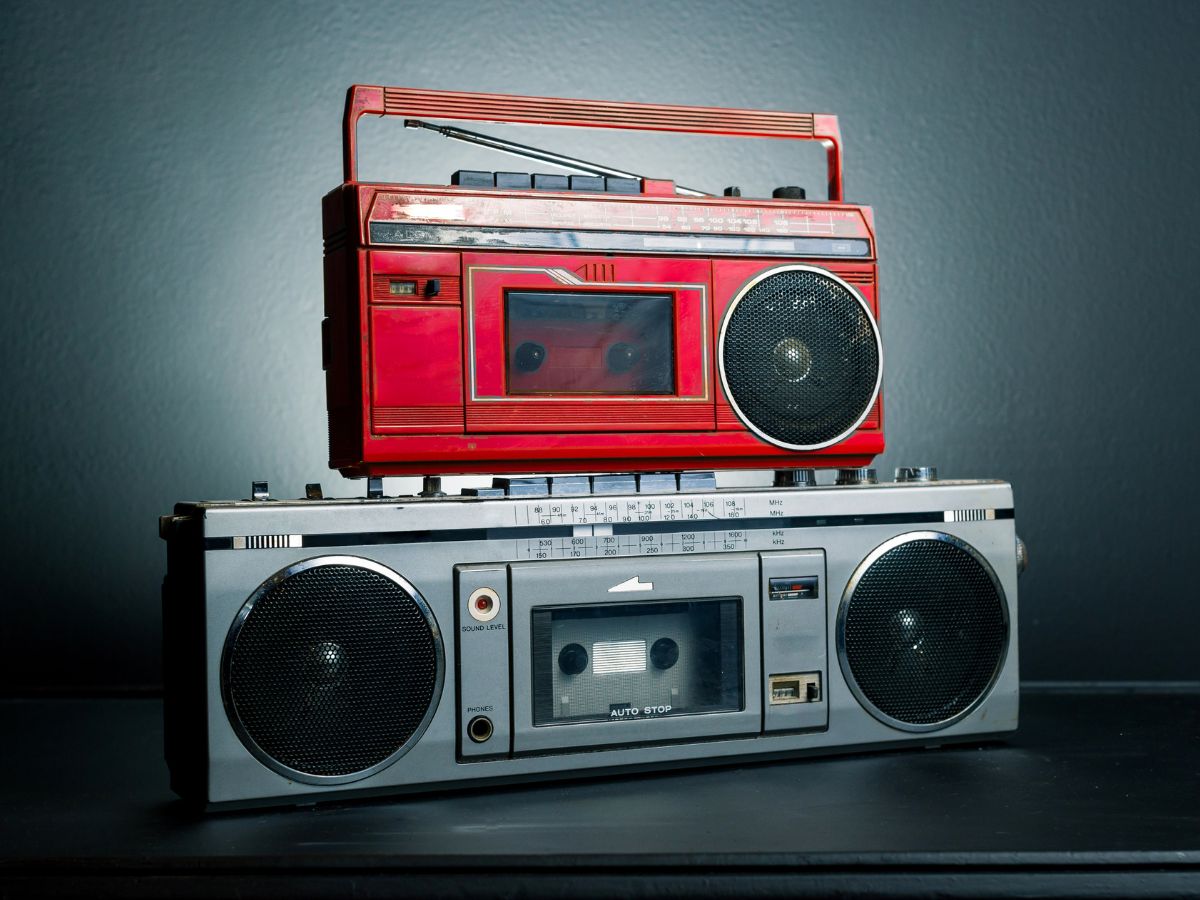

Hip Hop
What Is One Notable Fact About How Hip Hop Music Was Created?
Modified: January 22, 2024
Discover the fascinating origin of Hip Hop music and its unique creation process, revolutionizing the music industry with its raw beats and powerful storytelling.
(Many of the links in this article redirect to a specific reviewed product. Your purchase of these products through affiliate links helps to generate commission for AudioLover.com, at no extra cost. Learn more)
Table of Contents
Early Origins of Hip Hop
Hip hop, a genre that has become a global phenomenon, originated in the 1970s in the vibrant streets of the Bronx, New York. It was born out of a unique blend of cultural influences, social movements, and a desire for artistic expression. Understanding the early origins of hip hop is crucial to grasp the essence and significance of this influential musical genre.
During this time, the Bronx faced numerous challenges, including poverty, high crime rates, and social unrest. However, out of this adversity emerged a creative outlet that would forever change the musical landscape. The streets became the stage for block parties, where DJs and MCs would gather to showcase their talent and entertain the community.
These block parties served as the foundation for hip hop culture, providing a space for individuals to express themselves through music and dance. The gathering of people from different backgrounds, ethnicities, and neighborhoods contributed to the diversity and inclusivity that characterize hip hop today.
The street parties provided an opportunity for DJs to showcase their turntablism skills and create a unique blend of music by mixing different records. This innovative approach to DJing laid the groundwork for hip hop’s distinct sound and energetic vibe.
In addition to DJs, MCs (Master of Ceremonies), also known as rappers, played a pivotal role in the creation of hip hop. MCing involved delivering rhythmic and poetic verses over the DJ’s beats, adding a lyrical dimension to the music. This art form allowed individuals to express their thoughts, experiences, and aspirations, giving rise to the poetic and socially conscious lyrics that are central to hip hop.
The influence of African and Caribbean musical styles cannot be overlooked when discussing the origins of hip hop. The rhythmic beats, vibrant melodies, and call-and-response techniques found in these genres deeply influenced the creation of hip hop music. This fusion of different musical styles created a unique sound that resonated with listeners and laid the foundation for the development of hip hop beats.
One notable aspect of hip hop’s early days is the use of sampling. DJs and producers would creatively sample fragments of existing songs and combine them with their own beats to create new and innovative tracks. This sampling technique allowed hip hop artists to pay tribute to their musical predecessors while adding their own artistic flair.
From its early beginnings in the Bronx, hip hop has evolved and grown into a worldwide cultural phenomenon. Its impact can be felt not only in music but also in fashion, dance, visual art, and even politics. The early origins of hip hop laid the groundwork for an art form that continues to inspire and empower individuals around the globe, showcasing the power of creative expression and cultural exchange.
The Bronx Street Parties
The Bronx street parties were the birthplace of hip hop culture, providing a platform for DJs, MCs, dancers, and artists to showcase their talent and contribute to the development of this groundbreaking musical genre.
During the 1970s, the Bronx faced numerous challenges, including poverty, urban decay, and high crime rates. However, amidst these difficult conditions, the community found solace and inspiration in street parties, which were organized in neighborhoods such as Sedgwick Avenue, Cedar Park, and Patterson Houses.
These block parties became a fundamental part of the cultural fabric of the Bronx, serving as a means for individuals to come together and express themselves creatively. The parties were typically held in abandoned lots, parks, or even housing project courtyards. They provided a much-needed reprieve from the struggles of daily life and offered a platform for artistic expression.
The street parties were characterized by a lively and energetic atmosphere, with people from various backgrounds coming together to celebrate music, dance, and community. The events were typically organized by local community leaders or organizations, often with the support of community centers and housing projects.
The parties featured DJs who showcased their turntablism skills, using two turntables and a mixer to create unique blends of music. The DJs would spin records from various genres, including funk, soul, disco, and R&B, captivating the audience with their seamless transitions and crowd-pleasing selections.
In addition to the DJs, MCs played a crucial role in hyping up the crowd and engaging with the audience. MCs, often referred to as rappers or lyricists, would use their vocal skills to deliver rhythmic and poetic verses over the beats provided by the DJs. Their lyrical prowess and captivating performances became a defining element of hip hop music.
Alongside the DJs and MCs, dancers brought their unique styles and moves to the street parties. Breaking, popping, and locking became integral parts of the hip hop dance culture, with dancers showcasing their skills and engaging the crowd with their movements.
Artists and graffiti writers also found a platform at the Bronx street parties. Walls and buildings became canvases for colorful and vibrant artwork, with artists using graffiti to express themselves and reflect the spirit of hip hop.
The Bronx street parties were not just about entertainment, but also about fostering a sense of community and unity. They offered a safe space for people to come together, regardless of their background or circumstances, and celebrate the power of music and artistic expression.
These early street parties laid the foundation for the hip hop movement, providing a nurturing environment for artists to hone their skills, innovate, and collaborate. The energy and creativity that emanated from these gatherings set the stage for the global phenomenon that hip hop has become today.
The Role of DJs in Hip Hop’s Creation
DJs played a pivotal role in the creation and evolution of hip hop, shaping the genre’s unique sound and setting the stage for its global impact. In the early days of hip hop, DJs were the pioneers and architects of the music, responsible for curating innovative beats and creating an electrifying atmosphere for the community.
One of the key elements that DJs brought to hip hop was their turntablism skills. They utilized two turntables and a mixer to seamlessly mix and blend different records, creating a continuous flow of music that kept the crowd engaged and energized during block parties and other events.
These DJs, such as Kool Herc, Grandmaster Flash, and Afrika Bambaataa, were innovators in their craft. They developed techniques like scratching, backspinning, and beat juggling, which added a distinct and dynamic element to their performances. These techniques allowed DJs to manipulate the sound, rhythm, and tempo of records, creating exciting and unpredictable moments for the audience.
The DJs’ ability to read the crowd and respond to their energy was another crucial aspect of their role in hip hop’s creation. They had an innate sense of what tracks would resonate with the audience and could gauge the mood of the crowd, adapting their selections and mixing styles accordingly. This deep connection with the crowd contributed to the organic and interactive nature of hip hop performances.
Furthermore, DJs played a significant role in the discovery and popularization of breakbeats. Breakbeats are short drum sections in records that became the foundation for the rhythmic backbone of hip hop. DJs would isolate and loop these breakbeats, extending them to create extended sections for MCs and dancers to showcase their skills.
By providing the beats and creating a vibrant musical landscape, DJs allowed MCs, or rappers, to shine. The relationship between DJs and MCs was symbiotic, with the DJ providing the foundation for the MC’s lyrical flow and the MC adding a vocal element to the DJ’s musical mix. This synergy between the DJs and MCs was integral to the development and evolution of hip hop music.
DJs also played a crucial role in the exposure and distribution of hip hop music. They would create mixtapes, compiling their own mixes of popular tracks and underground gems, which became highly sought-after among hip hop enthusiasts. These mixtapes allowed DJs to showcase their skills while promoting the music and artists they believed in.
Moreover, DJs were at the forefront of radio shows dedicated to hip hop, providing a platform for emerging artists and promoting the genre to a wider audience. Their radio shows allowed listeners to discover new music, stay up-to-date with the latest releases, and connect with the hip hop community on a larger scale.
The role of DJs in hip hop’s creation cannot be overstated. Their innovative techniques, keen understanding of the crowd, and ability to create a vibrant musical backdrop laid the foundation for the genre’s growth. Today, DJs continue to drive the evolution of hip hop, pushing boundaries, and shaping the sound of this dynamic and ever-evolving musical genre.
MCing and the Birth of Rapping
MCing, also known as rapping, played a pivotal role in the creation and development of hip hop music. It gave voice to the thoughts, experiences, and stories of the community, and became one of the defining elements of the genre. The birth of rapping can be traced back to the vibrant streets of the Bronx in the 1970s, where MCs emerged as powerful wordsmiths and performers.
Rapping, at its core, is the art of delivering rhythmic verses and spoken word poetry over beats provided by DJs. MCs would use their vocal skills to create a melodic and rhythmic flow that complemented the music, captivating listeners with their lyrical dexterity and unique storytelling ability.
In the early days of hip hop, MCing was often improvised and spontaneous. MCs would freestyle, delivering off-the-cuff verses that reflected the energy of the moment and engaged with the crowd. This improvisational style allowed MCs to showcase their creativity and connect with the audience on a deep and personal level.
As hip hop evolved, MCs began to write and refine their verses, crafting intricate lyrics with clever wordplay, metaphors, and storytelling techniques. They used their platform to address social and political issues, shed light on personal struggles, and celebrate the culture and community they represented.
The birth of rapping also brought about the concept of battling. Battles, often held during block parties or in park settings, involved two or more MCs engaging in a lyrical competition. They would exchange verses, aiming to outwit and outperform each other with their wordplay, delivery, and stage presence. Battles became a way for MCs to showcase their skills, establish their reputation, and push the boundaries of their art form.
One of the key figures in the birth of rapping was DJ Kool Herc, known as the “Father of Hip Hop.” Herc’s innovative DJing techniques, such as extending the breakbeats, provided the perfect canvas for MCs to showcase their lyrical prowess. His parties and gatherings became a breeding ground for MCs to develop their skills and refine their craft.
Another influential figure in the early days of rapping was Grandmaster Caz, who is hailed as one of the pioneers of lyrical storytelling in hip hop. His smooth delivery, engaging storytelling, and intricate rhymes set the stage for the future of rap music.
As hip hop gained popularity, MCs began to record and release their music, contributing to the growth and mainstream appeal of the genre. The emergence of hip hop records allowed MCs to reach a wider audience and solidify their place in the music industry.
Today, rapping continues to be a fundamental element of hip hop culture. MCs have evolved and diversified, with different styles and sub-genres representing a wide range of voices and perspectives. From conscious and socially aware lyrics to energetic and party-oriented flows, rapping remains a powerful and expressive art form within hip hop.
The birth of rapping not only gave a voice to the community but also provided a platform for artists to tell their stories, inspire others, and challenge the status quo. The art of MCing continues to shape and define hip hop, showcasing the power of words and the influence of the spoken word in music.
The Influence of African and Caribbean Musical Styles
The vibrant and diverse musical traditions of Africa and the Caribbean have had a profound influence on the creation and evolution of hip hop music. These rich cultural legacies brought unique rhythms, melodies, and expressive techniques that became integral to the sound and identity of hip hop.
African musical styles, with their intricate rhythms and infectious beats, had a particularly strong impact on the development of hip hop. The rhythmic elements of African drumming and percussions provided the foundation for the rhythm section of hip hop tracks, driving the energetic and pulsating sound of the genre.
The polyrhythms and syncopation found in African music influenced the way beats were constructed in hip hop. DJs and producers utilized these rhythmic patterns to craft dynamic and groove-based beats, creating a captivating sonic landscape for hip hop artists to showcase their skills.
In addition to rhythms, African musical traditions also contributed to vocal techniques and lyrical delivery in hip hop. The call-and-response structure, prevalent in African music and often used in spiritual and communal ceremonies, became an important aspect of the interaction between MCs and the crowd. This technique allowed for crowd engagement and interaction, creating a sense of unity and participation within the hip hop community.
Caribbean musical styles, with their vibrant melodies and infectious rhythms, also played a significant role in shaping hip hop music. Reggae, ska, dancehall, and calypso music brought a unique flavor and cadence to the genre, adding layers of cultural diversity and sonic richness.
The influence of Jamaican music, particularly reggae, can be seen in the use of “riddims” in hip hop. Riddims are instrumental tracks characterized by their grooves and chord progressions. In hip hop, these riddims are often sampled and used as the foundation for beats, providing a melodic and rhythmic framework for MCs to express themselves.
Moreover, the lyrical content and storytelling aspect of Caribbean music played a significant role in the development of hip hop. Calypso, for example, has a long tradition of social and political commentary, using witty and satirical lyrics to address important issues. This tradition of storytelling and lyrical prowess influenced MCs to incorporate similar themes and techniques in their own music.
The fusion of African and Caribbean musical styles in hip hop showcased the power of cultural exchange and the ability of artists to draw inspiration from diverse sources. It reflected the multicultural and inclusive spirit of the genre, embracing different musical traditions to create a unique and innovative sound.
The influence of African and Caribbean musical styles on hip hop is undeniable. From the rhythmic foundations to the vocal techniques and storytelling approaches, these rich musical traditions have left an indelible mark on the genre, contributing to its global appeal and continued evolution.
Sampling and the Development of Hip Hop Beats
Sampling is a fundamental element of hip hop music, and it has played a crucial role in the development and evolution of the genre’s beats. Sampling involves taking portions, or samples, from existing songs and incorporating them into new compositions. This technique has been integral to the creation of unique and innovative hip hop beats.
In the early days of hip hop, DJs and producers would dig through crates of vinyl records, searching for loops, drum breaks, melodies, and other musical fragments to sample. They would then manipulate these samples using turntables, samplers, and other equipment, creating new musical arrangements with an entirely fresh sound.
Sampling allowed hip hop artists to pay homage to the musical pioneers who came before them, using fragments of iconic or lesser-known tracks to create something entirely new. It became a way to preserve and honor the history of music while pushing boundaries and fostering creativity.
One of the reasons sampling became prevalent in hip hop was its accessibility. Hip hop was born out of the urban communities of the Bronx and other areas, where resources and access to musical instruments were often limited. Sampling provided an innovative solution, allowing artists to create music using what was readily available to them.
Sampling also played a significant role in broadening the sonic palette of hip hop beats. By incorporating samples from a wide range of genres, including funk, soul, jazz, rock, and even classical music, producers were able to create eclectic and dynamic soundscapes. This cross-genre experimentation helped shape the diverse and eclectic nature of hip hop music.
Furthermore, sampling introduced an element of nostalgia and familiarity to hip hop. Listeners could hear familiar melodies or vocal snippets from songs they were already familiar with, creating a sense of connection and recognition. This quality of sampling has contributed to the enduring appeal and popularity of hip hop.
However, it is important to note that sampling has often been a subject of legal and ethical debates. As the popularity of hip hop grew, copyright issues arose, as artists and record labels sought compensation for the use of their copyrighted material. Copyright laws and regulations have had an impact on sampling practices, leading to the rise of clearance procedures and the need to secure proper permissions and licenses for samples used in commercial releases.
Despite these challenges, sampling remains a vital creative process within hip hop. It continues to push boundaries and inspire artists to find unique ways to incorporate and manipulate sounds. Sampling has helped shape the distinct and innovative beats that are synonymous with hip hop, constantly evolving and reinventing itself with each new generation of producers and artists.
Hip Hop’s Evolution and Commercial Success
Hip hop, once an underground subculture, has evolved into a global phenomenon that has captured the hearts and ears of people around the world. Throughout its history, hip hop has experienced remarkable growth and commercial success, transcending cultural boundaries and becoming a dominant force in the music industry.
In the 1980s, hip hop transitioned from the streets of the Bronx to mainstream music. Artists like Run-D.M.C., LL Cool J, and Public Enemy brought hip hop to a wider audience, incorporating catchy hooks, memorable lyrics, and polished production techniques. This era marked the beginning of hip hop’s commercial success, with albums topping the charts and artists achieving widespread recognition.
The 1990s are often considered the golden age of hip hop, with artists like Tupac Shakur, The Notorious B.I.G., and Nas pushing the boundaries of the genre. This decade saw hip hop diversify in style and content, ranging from conscious and socially aware lyrics to gangsta rap narratives. The success of hip hop during this period solidified its place in popular culture.
In the 2000s, hip hop continued to evolve and dominate the charts. The rise of mainstream artists like Jay-Z, Eminem, and Kanye West brought a new level of artistry and ambition to the genre. These artists pushed creative boundaries, experimenting with different sounds, collaborating with a diverse range of musicians, and incorporating elements of other genres into their music.
With the advent of the Internet and digital music platforms in the 2010s, hip hop’s reach and influence expanded even further. Artists started utilizing social media, streaming services, and YouTube to connect directly with their fans, bypassing traditional gatekeepers. This democratization of music distribution allowed independent artists to gain recognition and fostered a more diverse and inclusive hip hop landscape.
Today, hip hop is a global cultural force, influencing not only music but also fashion, art, and even political movements. The genre’s ability to continually adapt and reflect the experiences and aspirations of its listeners has contributed to its enduring popularity and commercial success.
Hip hop has also become a lucrative industry, with artists, producers, and entrepreneurs capitalizing on its commercial potential. Brand endorsements, merchandise lines, and multimedia ventures have become common for many hip hop artists, further contributing to the genre’s economic impact.
However, as hip hop has achieved commercial success, it has also faced criticism and controversy. Some argue that commercialization has led to a dilution of the genre’s authenticity and a focus on materialism and superficiality. Others express concern about cultural appropriation, as hip hop’s influence is often co-opted by mainstream culture without proper recognition and respect for its roots.
Nevertheless, hip hop’s evolution and commercial success cannot be denied. Its ability to connect with audiences on a global scale and continuously reinvent itself has solidified its position as a dominant musical genre. As hip hop moves forward, its cultural impact and resilience will continue to shape music and popular culture for years to come.





